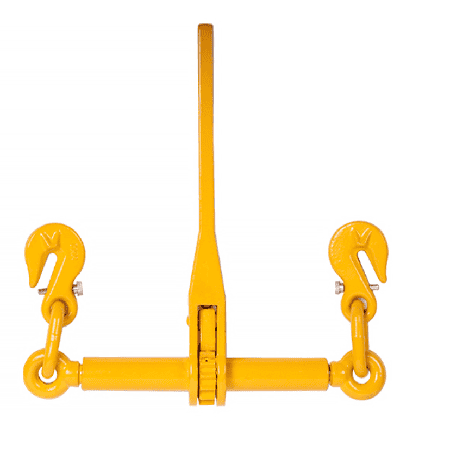Knotted Chain: Ideal for Protective and Decorative Chains
In modern industrial and construction fields, chains are widely used in various applications. Among them, the Knotted Chain, a unique type of chain, has gained increasing popularity due to its special structure and performance. Unlike traditional welded chains, knotted chains connect each chain link through knots, forming a flexible, durable, and aesthetically pleasing chain form.
What is a knotted chain?

A Knotted Chain is a type of chain where the links are connected through knots or interlocking methods. A Knotted Chain is a type of chain where the links are connected through knots or interlocking methods. Due to its flexibility, knotted chains are applied in various scenarios, such as fencing, decoration, and securing light machinery or tools. Due to its flexibility, knotted chains are applied in various scenarios, such as fencing, decoration, and securing light machinery or tools.
Manufacturing Process of Knotted Chains
Material Selection
The material of the knotted chain is a key factor in determining its performance and durability. Common materials include:
- Low-carbon steel: Suitable for indoor use, offering moderate tensile strength and corrosion resistance.
- Stainless steel: Ideal for use in humid or salty environments, providing excellent anti-corrosion properties.
Processing Steps
- Cold Bending: First, the chosen metal material (such as wire or thin rod) is bent into the basic shape of the chain links through a cold-bending process.
- Knotted Connection: The chain links are connected by mechanical or manual knotting or interlocking to form a continuous chain.
- Surface Treatment:
- Electroplated zinc: Increases the chain’s corrosion resistance, suitable for indoor use.
- Hot-dip galvanized: Enhances the chain’s rust resistance, ideal for outdoor environments.
- Colored coating: Used for decorative purposes, offering both protection and aesthetic appeal.
DIN 5685 Knotted Chains Parameters

| Chain Size(D-mm) | Inside length(L-mm) | Outside Width(B-mm) | Weight per M(KG) |
| 1 | 14 | 4.5 | 0.02 |
| 1.2 | 17 | 5.5 | 0.03 |
| 1.4 | 20 | 6.5 | 0.04 |
| 1.6 | 23 | 7 | 0.06 |
| 1.8 | 26 | 8 | 0.073 |
| 2.0 | 28 | 9 | 0.09 |
| 2.2 | 31 | 10 | 0.11 |
| 2.5 | 35 | 11 | 0.14 |
| 2.8 | 39 | 12.5 | 0.17 |
| 3.1 | 41 | 14 | 0.21 |
| 3.4 | 44 | 15 | 0.26 |
| 3.8 | 46 | 17 | 0.34 |
| 4.2 | 50 | 19 | 0.41 |
| 4.6 | 55 | 20.5 | 0.5 |
| 5.0 | 60 | 22.5 | 0.57 |
WARNING: DO NOT EXCEED THE WORKING LOAD LIMIT
NOT FOR OVERHEAD LIFTING
Package: Plastic reel, box, wooden case, polybag, bucket

Application of DIN 5685 Knotted chain
- Fencing and Protective Chains: Knotted chains are commonly used in fence systems in parks, gardens, and scenic areas.
- Decorative Uses: Knotted chains are also widely used for decoration in building facades, bridge railings, and public spaces.
- Light Traction and Securing: In agriculture, livestock, and small machinery, knotted chains are used for light traction and securing purposes.
- Fishing and Agricultural Equipment: Knotted chains are used in connecting and supporting fishing nets, agricultural fences, and similar tools.
Advantages and Disadvantages of Knotted Chain
Advantages
- High Flexibility: The interlocking design of the chain links gives it greater flexibility, effectively absorbing external forces.
- Easy Installation: No complex tools are required for installation and disassembly, reducing construction difficulty and cost.
- Cost-Effective: Compared to traditional welded chains, knotted chains are more affordable and offer a higher cost-performance ratio.
- Aesthetic Appeal: The unique appearance of knotted chains makes them a popular choice for decorative applications.
Disadvantages
- Limited Load Capacity: Due to the knot-based link connection, knotted chains have lower load-bearing capacity and are not suitable for heavy-duty lifting or high-strength traction tasks.
- Wear Risk: Friction between the links may cause wear, requiring regular inspection and replacement of the chain.
Installation and Maintenance of Knotted Chains
Avoid excessive stretching of the chain during installation to prevent link deformation.
Regularly inspect the chain for wear, especially at the connecting points, and replace worn parts as needed.
For chains exposed to moist environments, clean them periodically and apply anti-rust oil to prevent rusting.
FAQ
- Can the Knotted Chain be used to lift heavy objects?
Knotted Chain is mainly used for protection, decoration and light traction. Because its chain link connection method is knotted, its load-bearing capacity is limited and it is not suitable for heavy lifting operations or high-load applications.
- What is the difference between the knotted chain and the ordinary welded chain?
The biggest difference lies in the chain link connection method. Knotted Chain connects the chain links by knotting and twisting, and the structure is softer, which is suitable for occasions that require a certain degree of flexibility; while the chain links of ordinary welded chains are welded closed, the structure is more solid, and the load-bearing capacity is stronger.
- Is Knotted Chain suitable for outdoor use?
Yes, but you need to choose the right surface treatment. It is recommended to choose hot-dip galvanized or stainless steel Knotted Chain for outdoor scenes to improve rust resistance and service life.
- How to properly maintain the knotted Chain?
Check the chain wear regularly, clean the surface dirt, and avoid long-term exposure in high humidity or corrosive environments; if necessary, apply anti-rust oil to extend the service life of the chain.
Whether you need reliable fencing, stylish decorations, or light-duty securing, we’ve got the perfect solution for you. Get in touch with us today to learn more and find the ideal knotted chain for your needs!”


